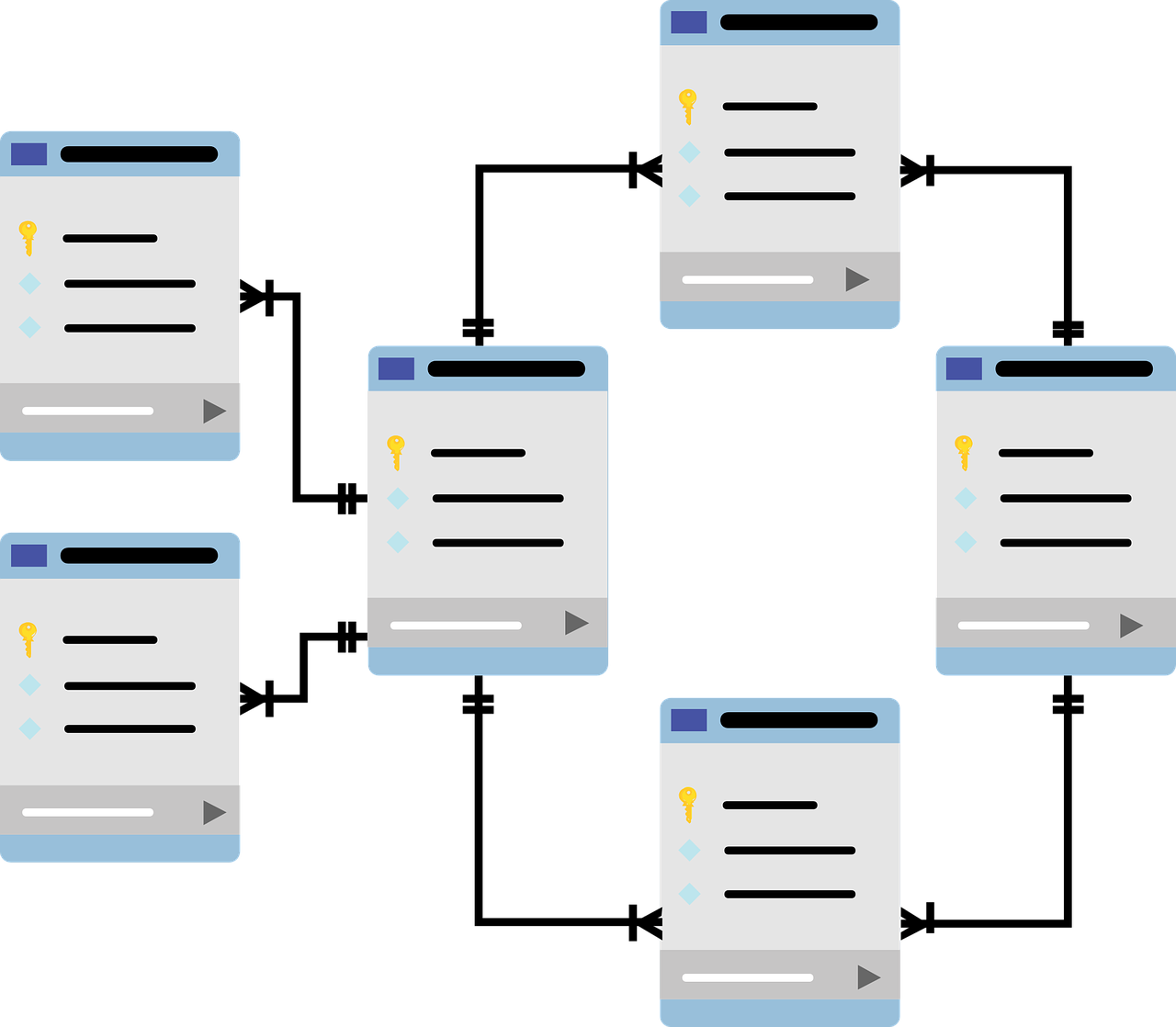Introduction – What is a Database?

(Common icon used to describe a database)
A database refers to the software framework that interacts with end users, applications, and the database itself is known as the database management system (DBMS). In the 1980s, relational databases dominated and was very popular for different software development tasks however the NoSQL technology later became more common in the 2000’s.
Non-relational databases, also known as NoSQL because they use different query languages, became popular in the 2000’s. A database system is the combination of the database, the DBMS, and the associated applications.
The term “database” can also refer to any type of DBMS, the database system, or an application that is associated with the database.
Background & technical overview

(Diagram known as Database schema which symbolizes the relationship between data)
Formally, a “database” refers to a collection of related data and the manner in which it is organized. Access to this data is typically provided by a “database management system” (DBMS), which is a set of integrated computer software that allows users to interact with one or more databases and provides access to all of the data contained in the database (although restrictions may exist that limit access to data).
The DBMS provides various functions that allow for the entry, storage, and retrieval of large amounts of data, as well as ways to manage how that data is organized.
Outside the world of information technology (IT), the term database is frequently used to describe any collection of related data (such as a spreadsheet or a card index)
Typically, the size and usage requirements necessitate the use of a database management system. Existing DBMS’s can be divided into four functional categories: data definition, administration, , update and retrieval.
A database and its database management system (DBMS) both adhere to the principles of a specific database model.
The term “database system” refers to the database model, database management system, and database.
Database servers are dedicated computers that only run the DBMS and related software and hold the actual databases. Database servers are typically multiprocessor computers with large amounts of memory and storage.
Small databases can be kept on personal computers and accessed by individuals at home. Government agencies, business organizations, and universities typically maintain the largest databases.
Commercial database applications that are common include airline reservations, medical records, and insurance records. Previously separate databases are increasingly being combined electronically into larger collections known as data warehouses.
Database model
This diagram showcases 5 common database models and how they might look like:

Conclusion
We hope you found this article helpful; if so, please share it with anyone you believe will benefit from it on social media and follow us on our social profiles.
AGR Technology is a Shepparton based business that offers digital marketing, software development, and web design and hosting to other businesses large and small across all parts of Australia and to English speaking markets.
Visit our blog and watch our videos to learn more about our solutions.
Citation(s):
Britannica, T. Editors of Encyclopaedia (Accessed 14th of May 2021). Database. Encyclopedia Britannica. https://www.britannica.com/technology/database
Marcel Douwe Dekker, CC BY-SA 3.0 https://creativecommons.org/licenses/by-sa/3.0, via Wikimedia Commons
Database. (2021, May 06). Retrieved May 14, 2021, from https://en.wikipedia.org/wiki/Database
![logo-new-23[1] logo-new-23[1]](https://agrtech.com.au/wp-content/uploads/elementor/thumbs/logo-new-231-qad2sqbr9f0wlvza81xod18hkirbk9apc0elfhpco4.png)